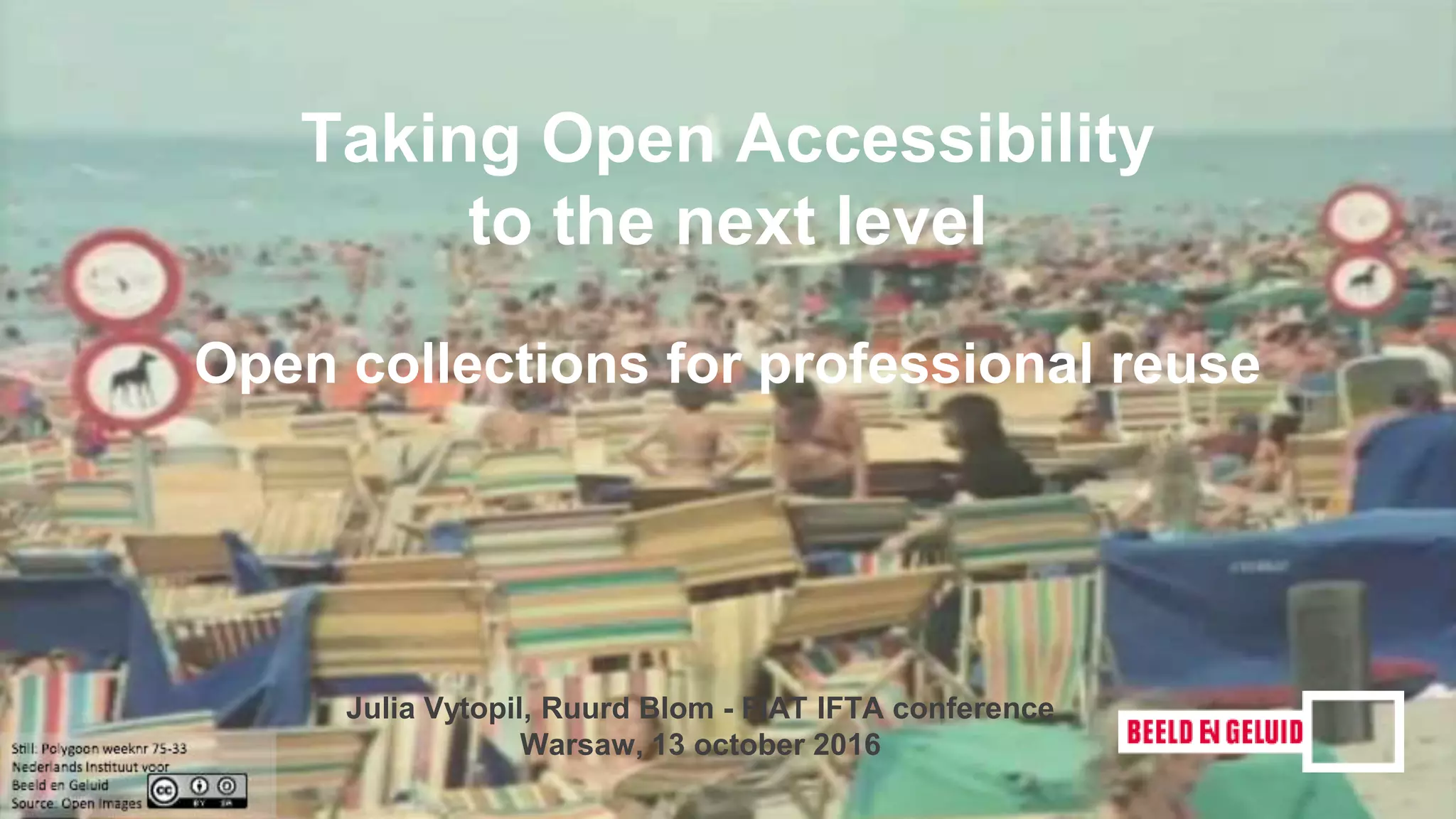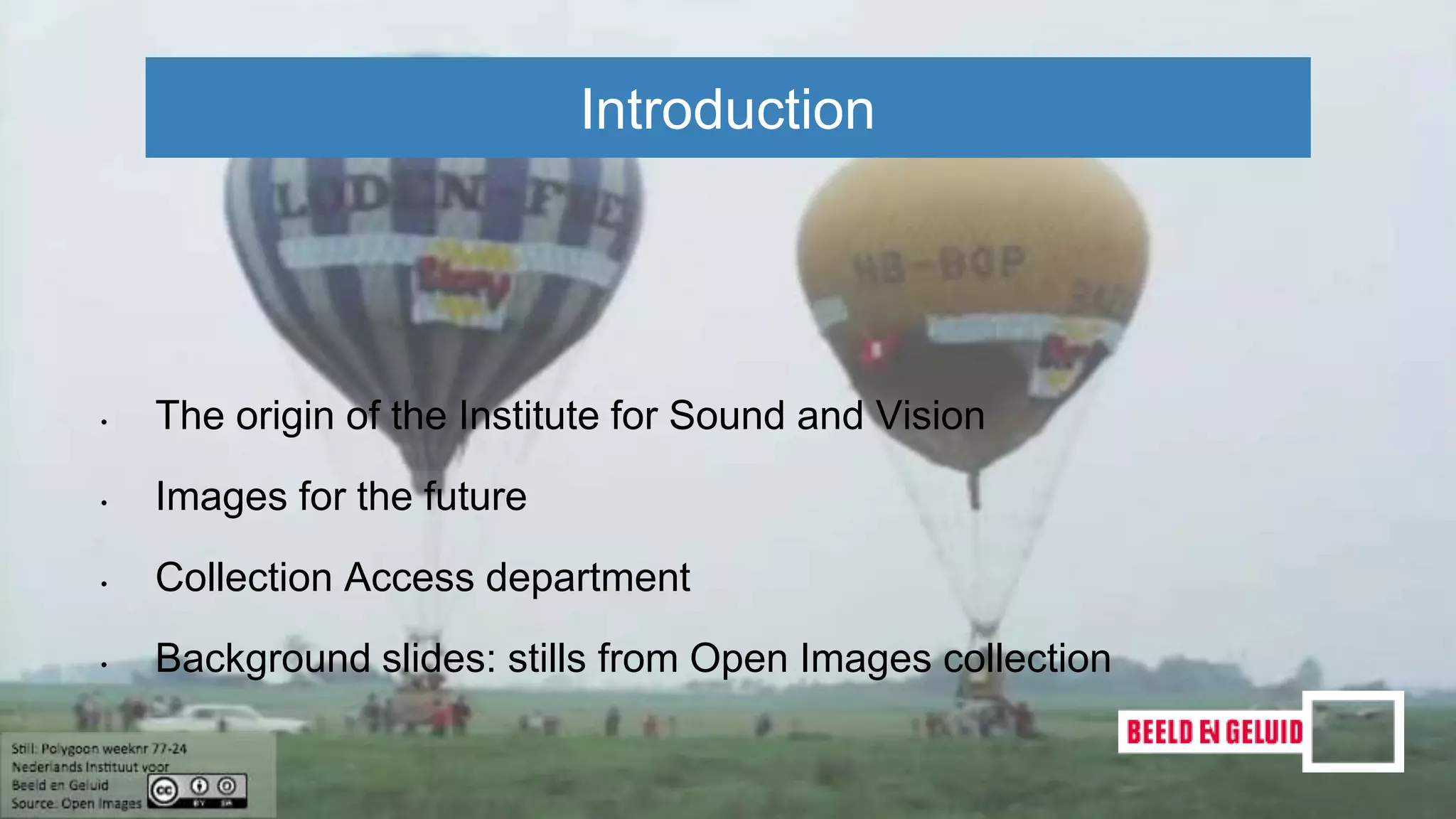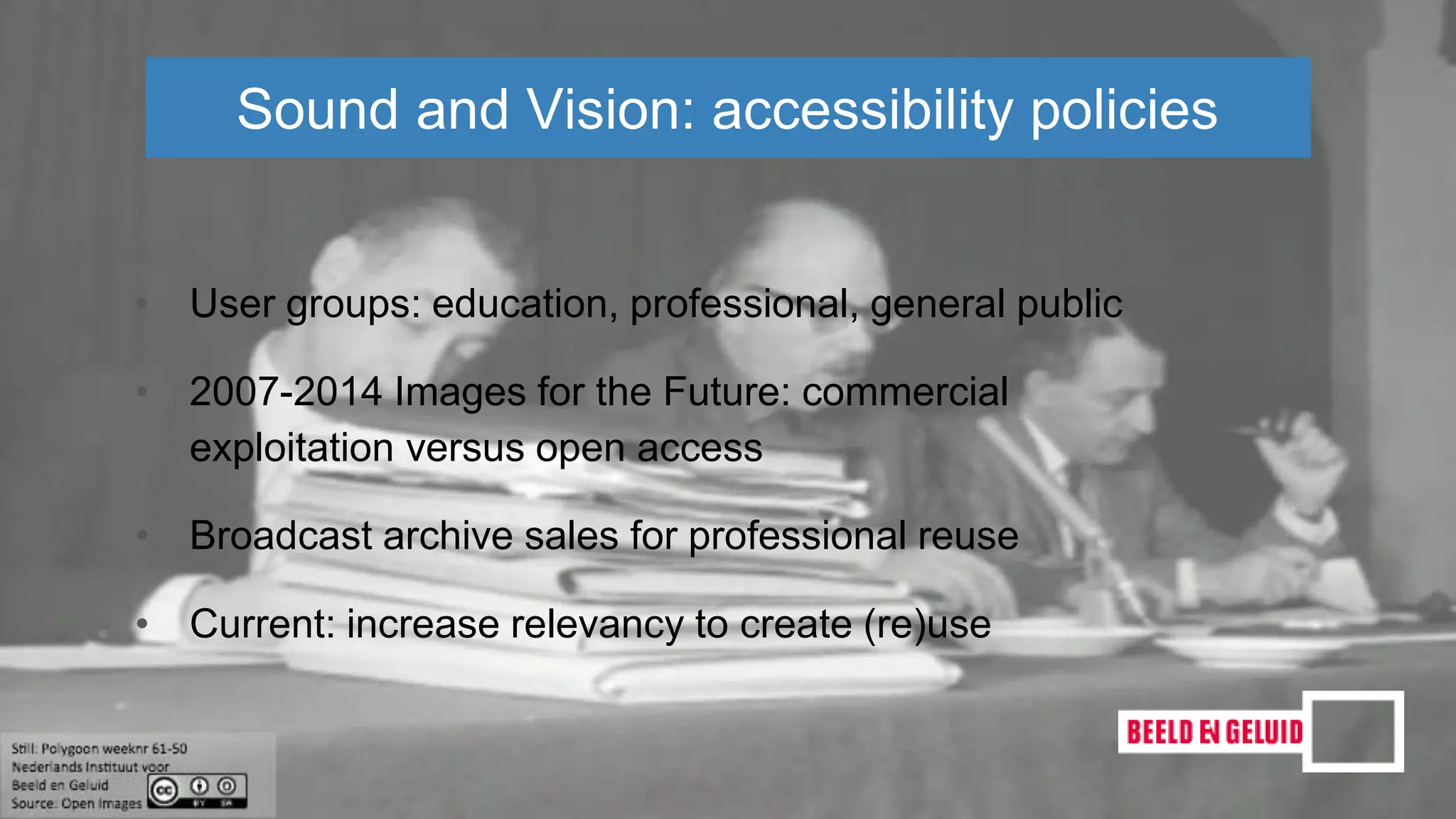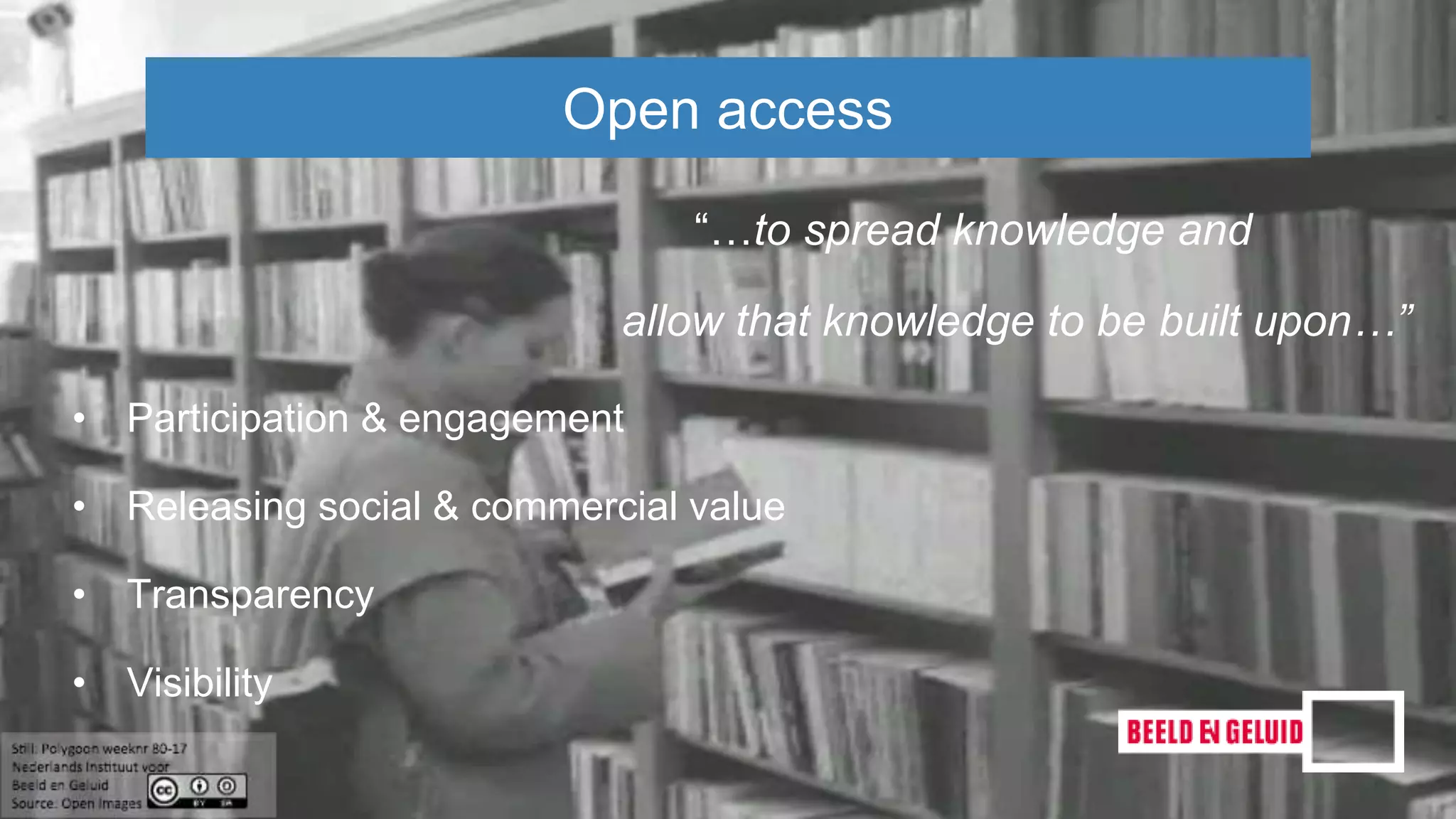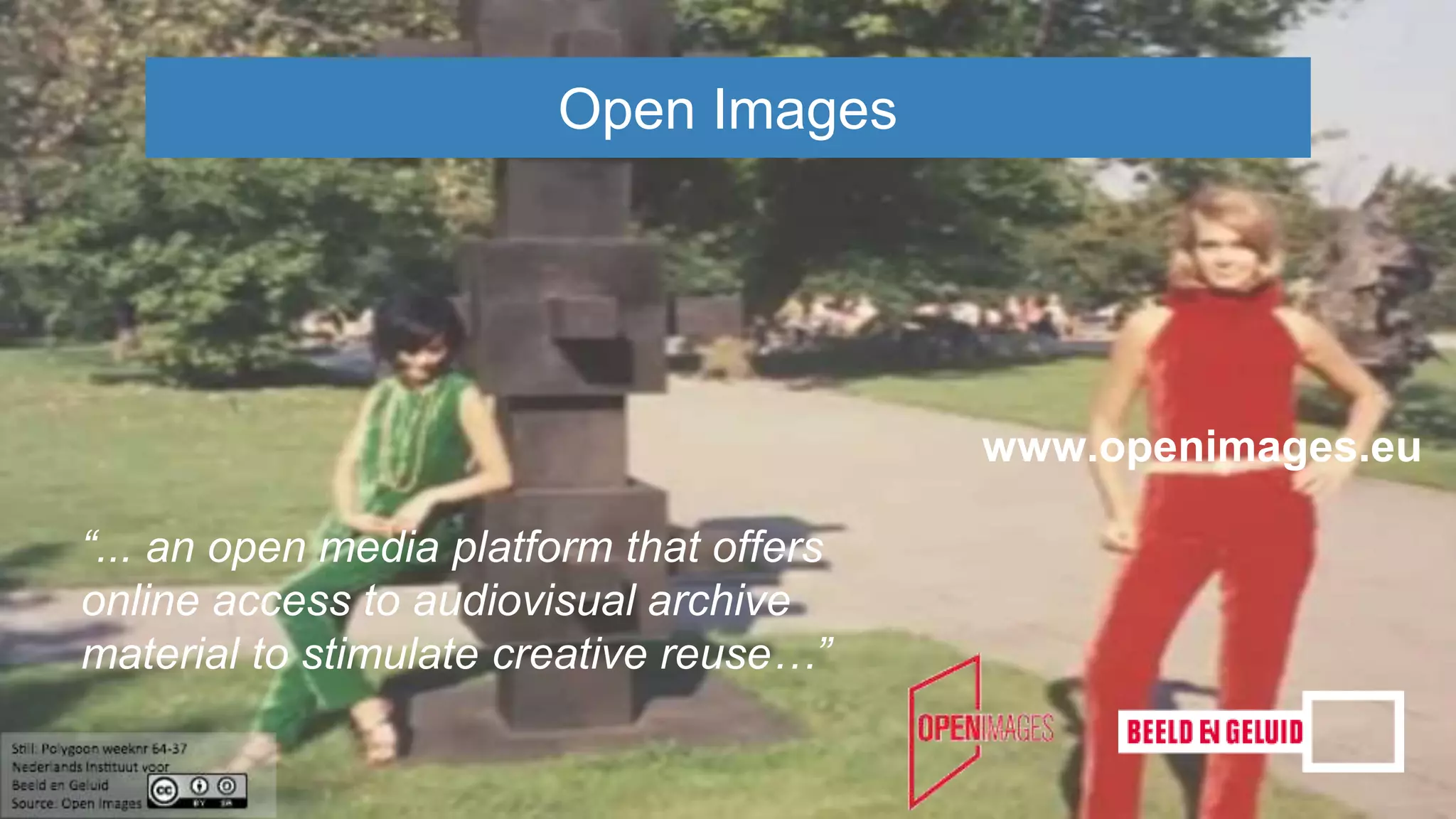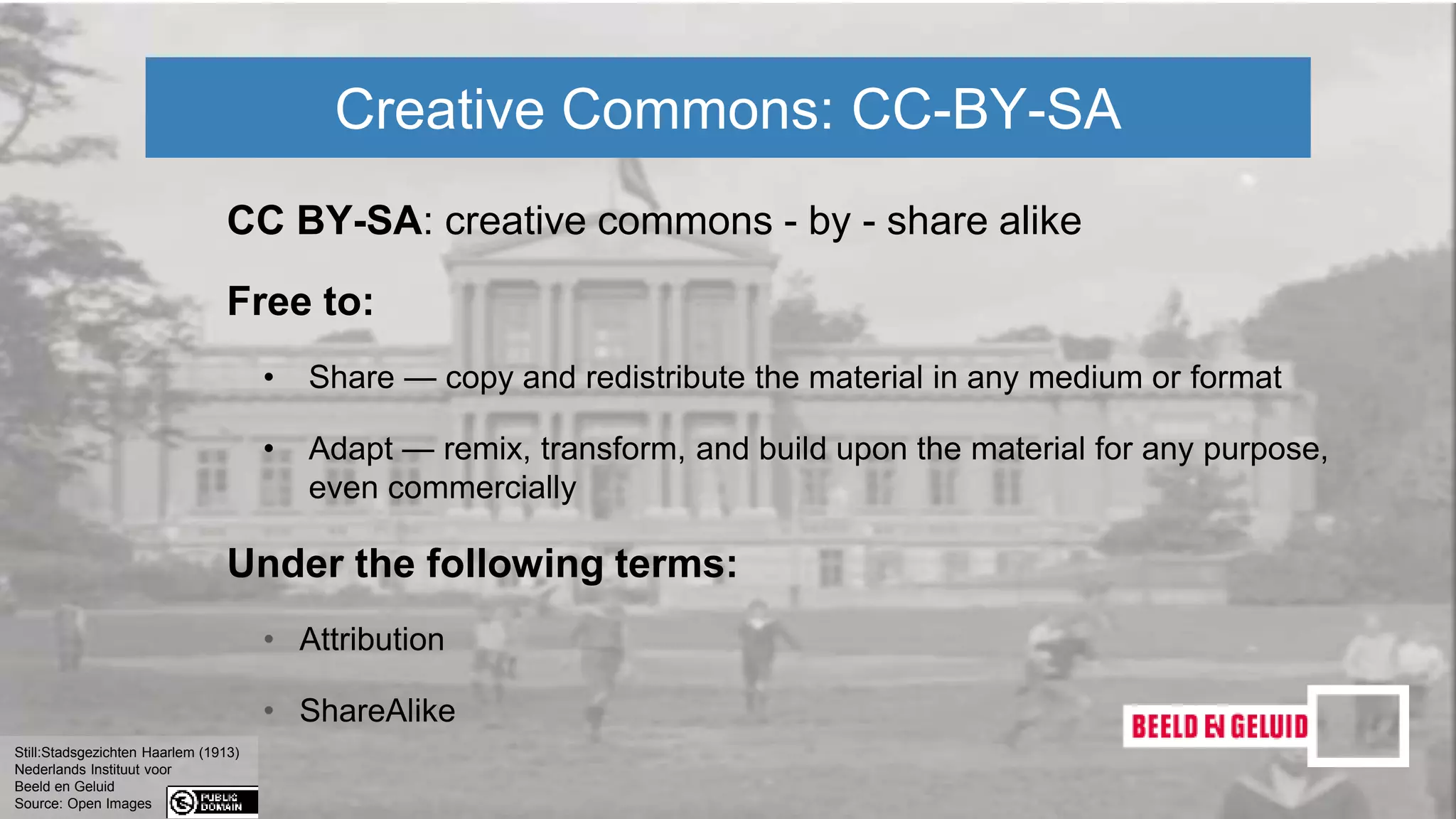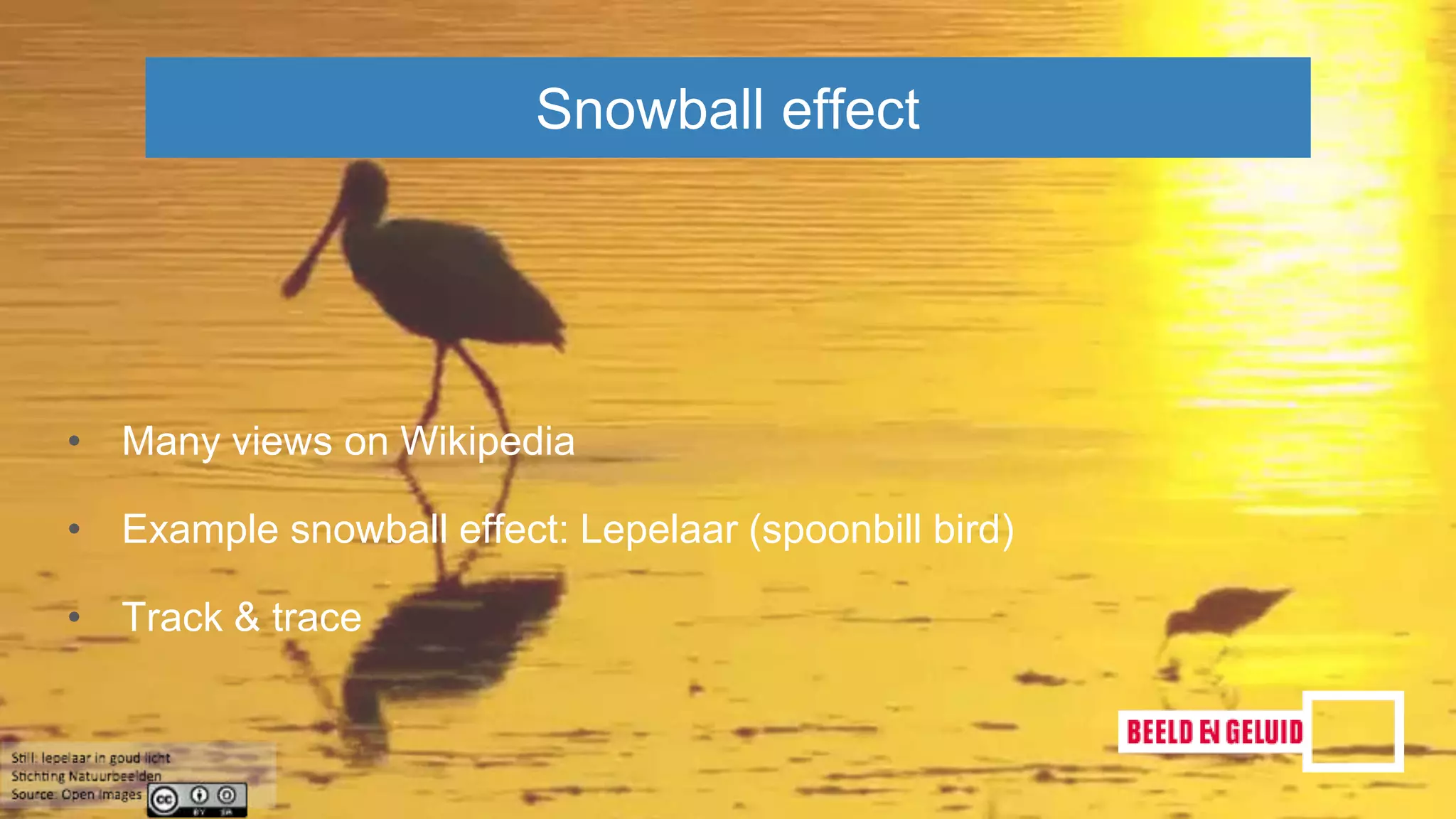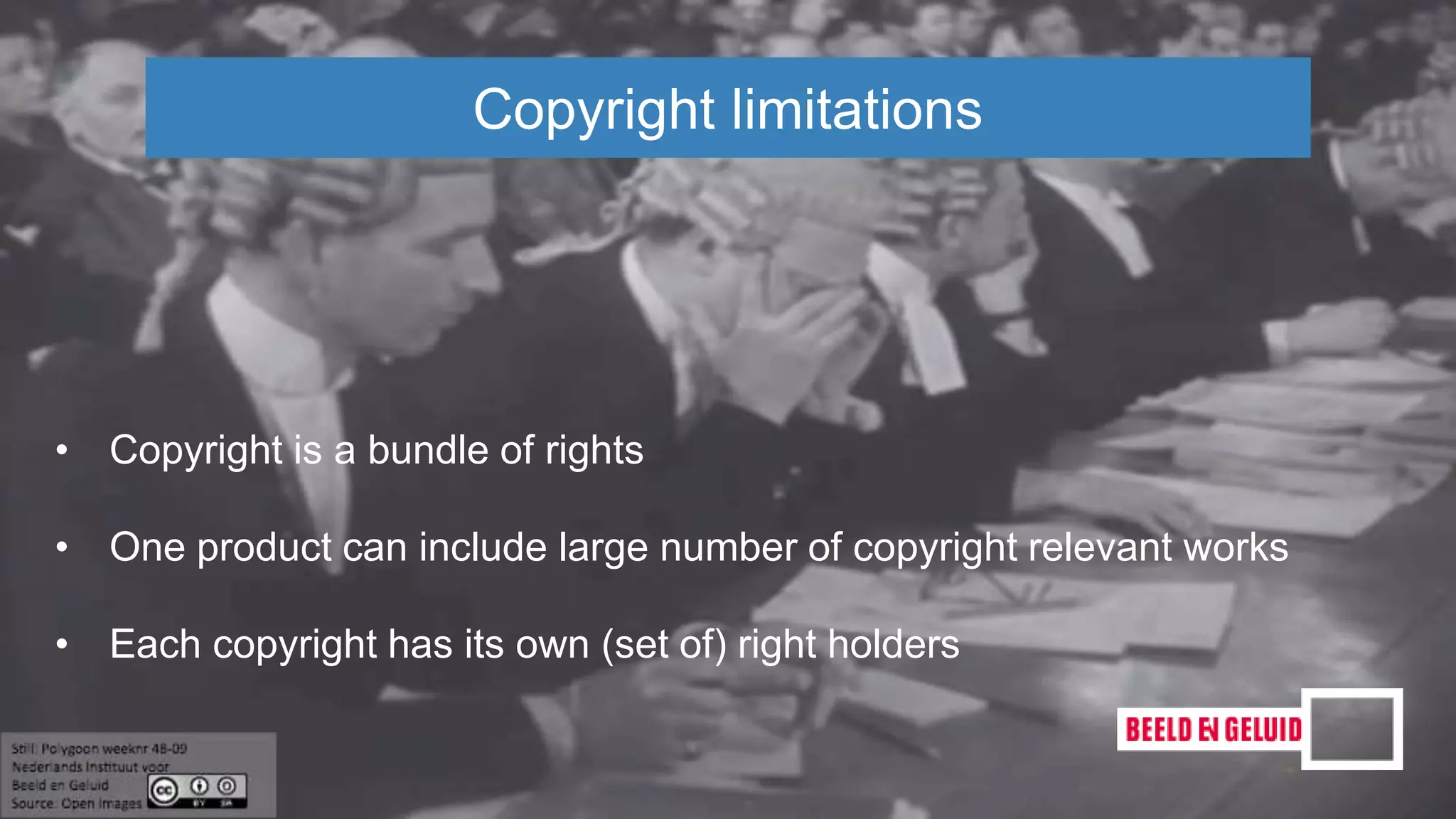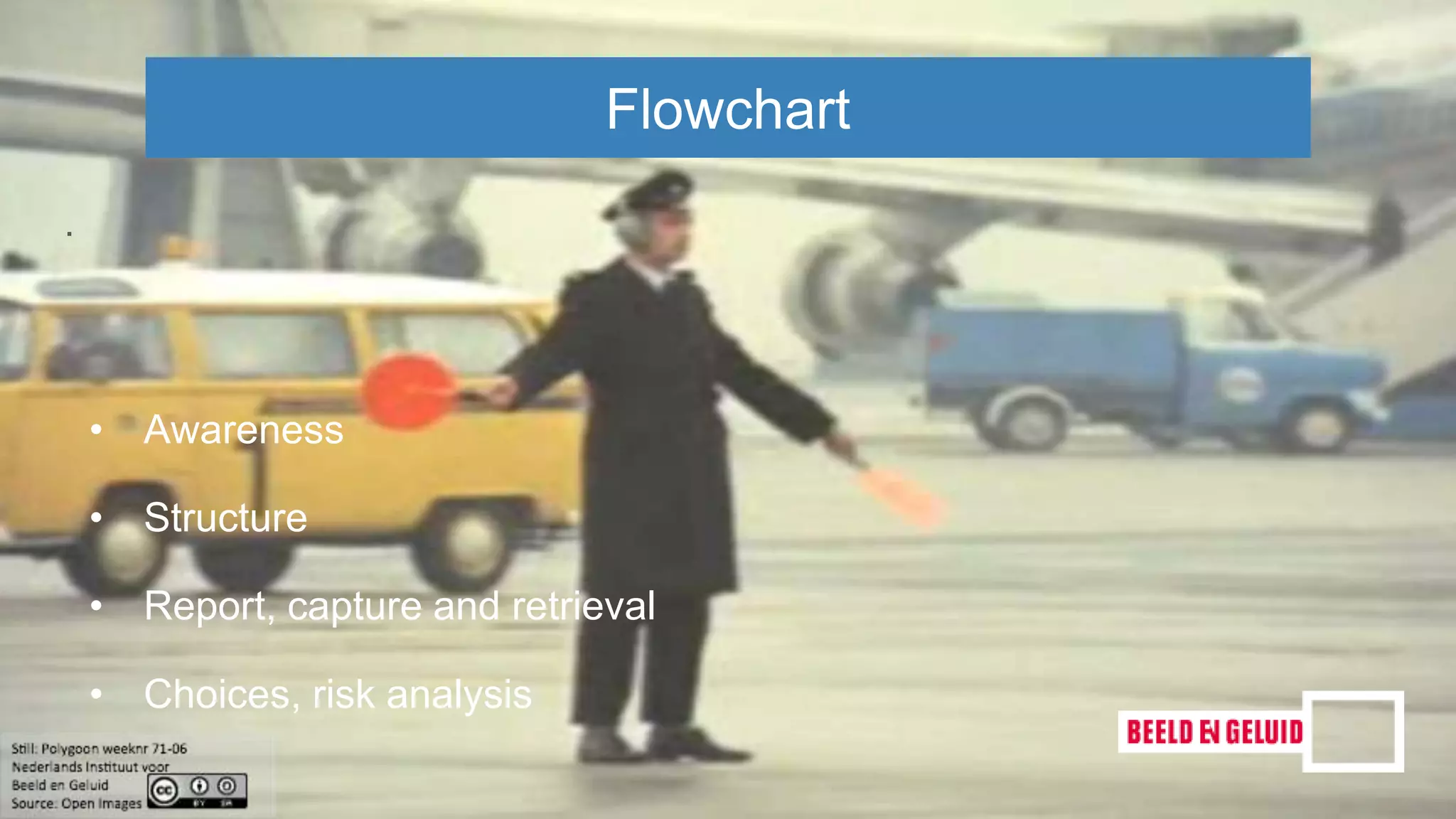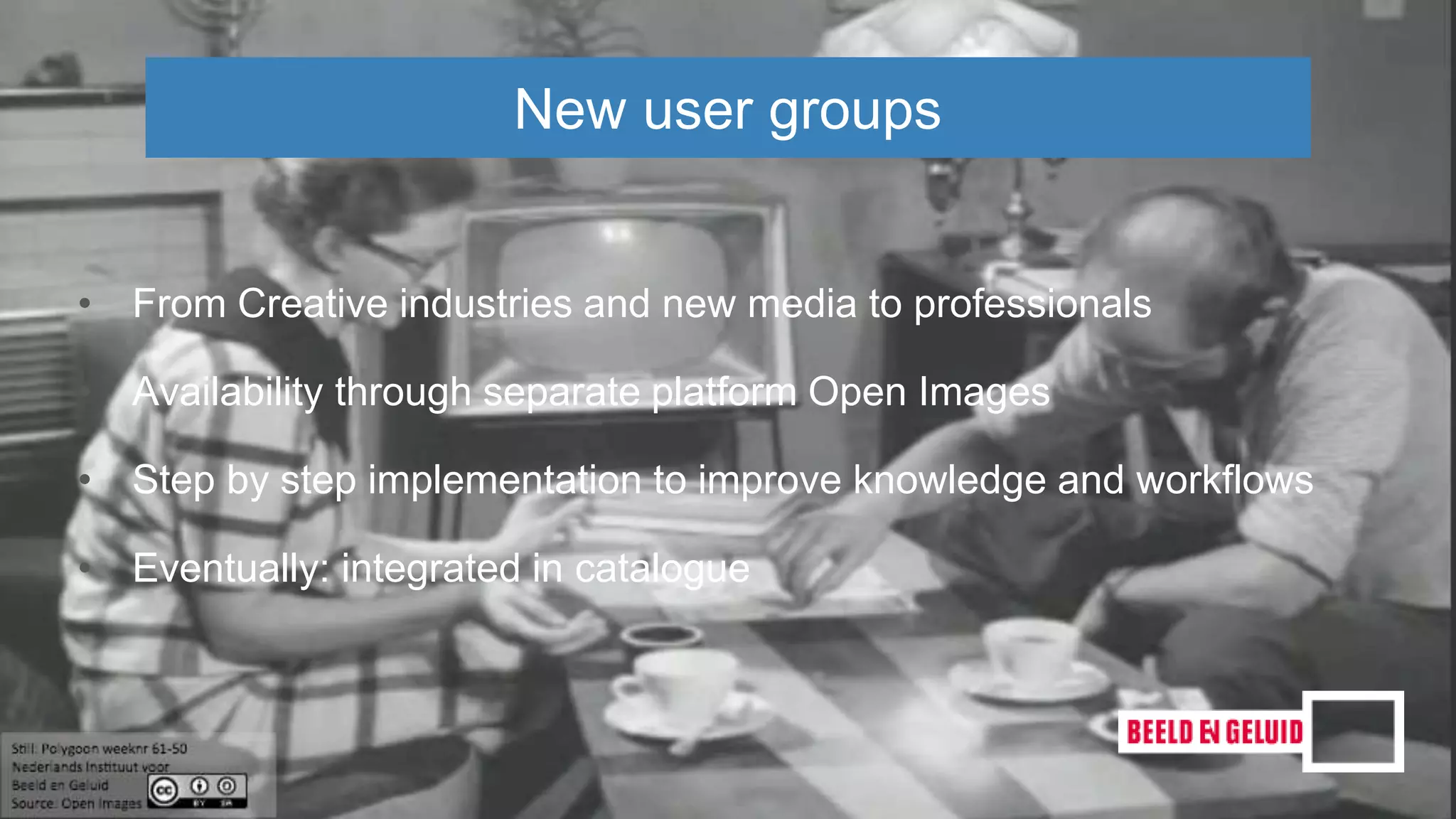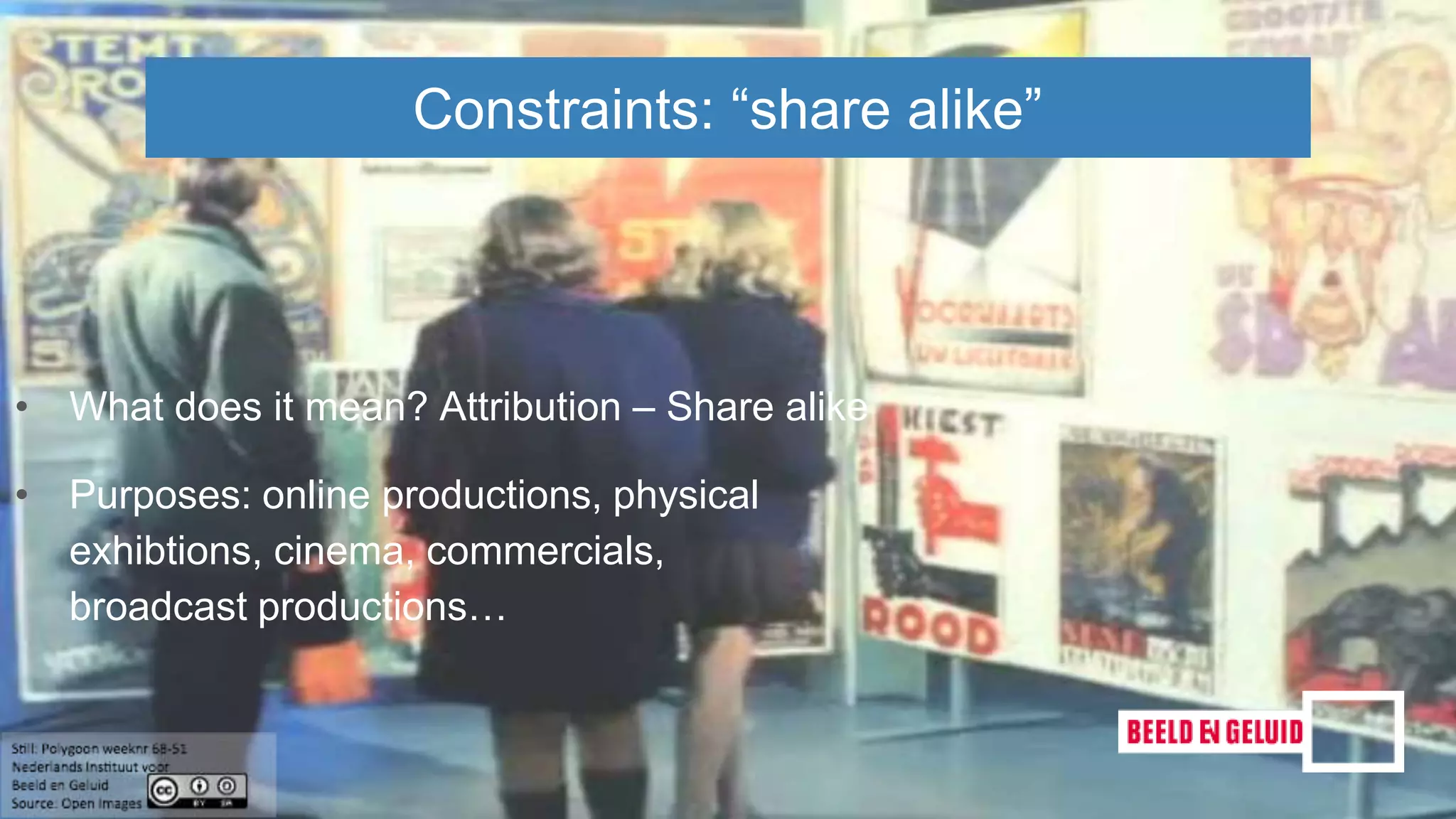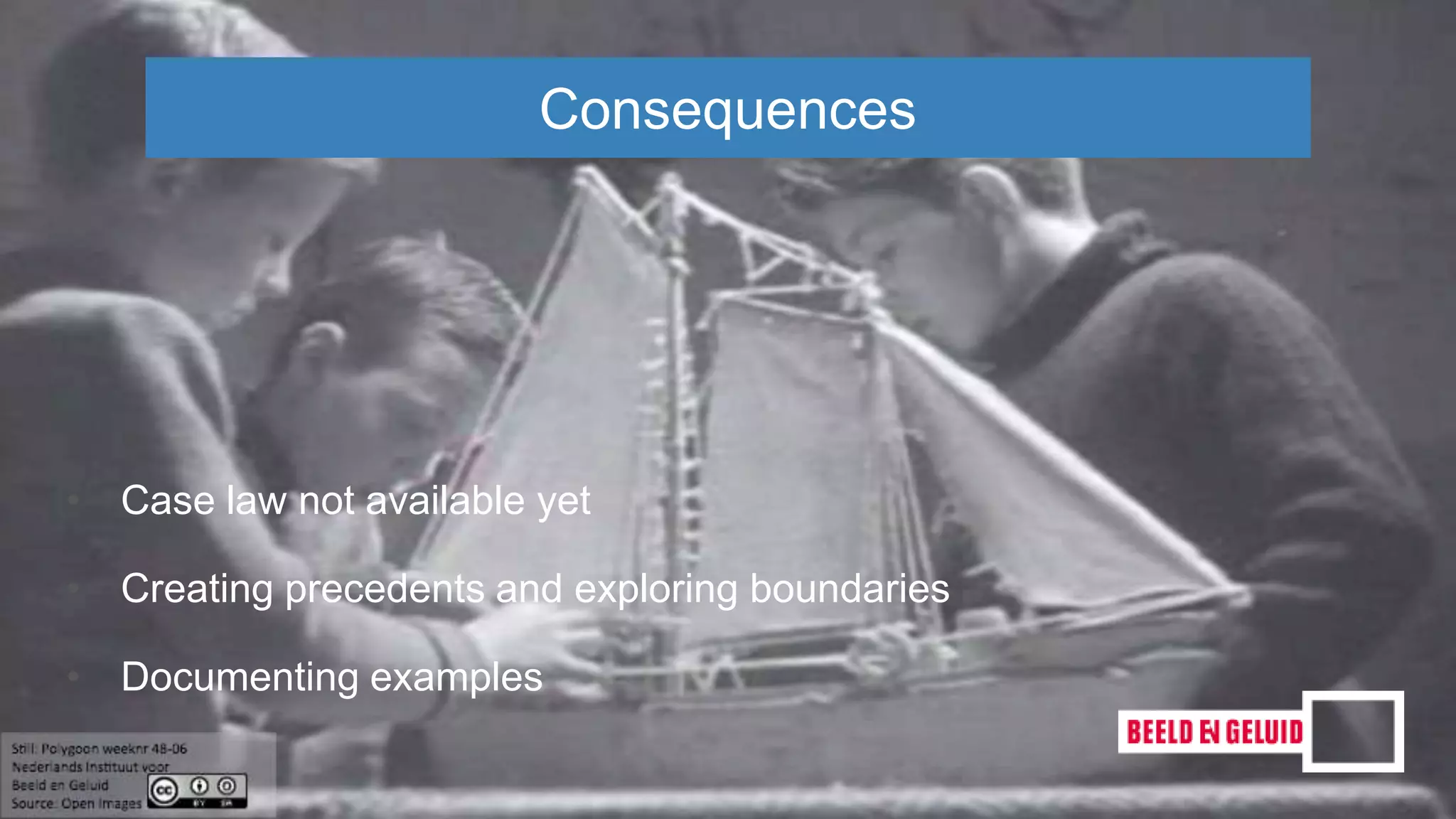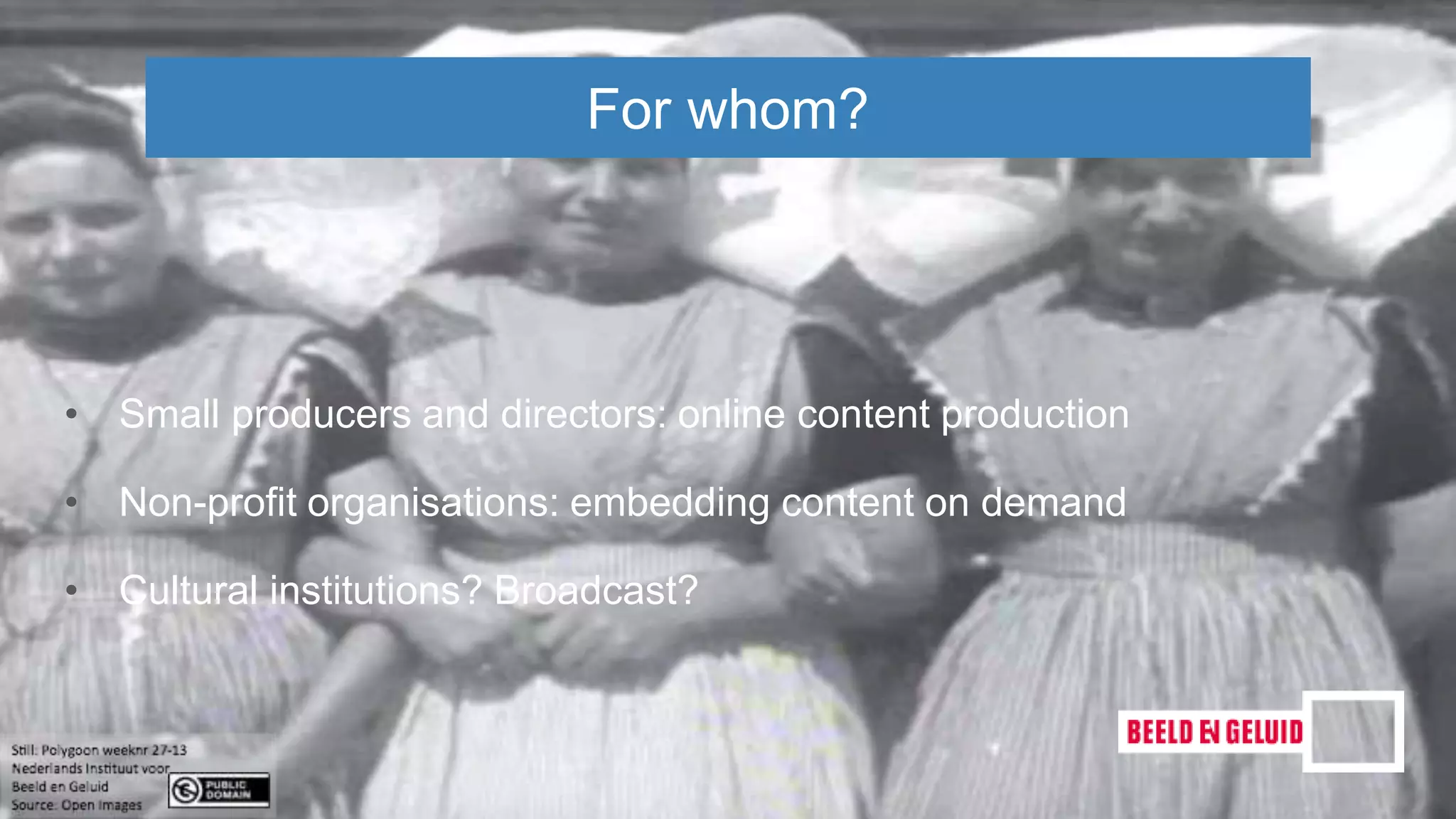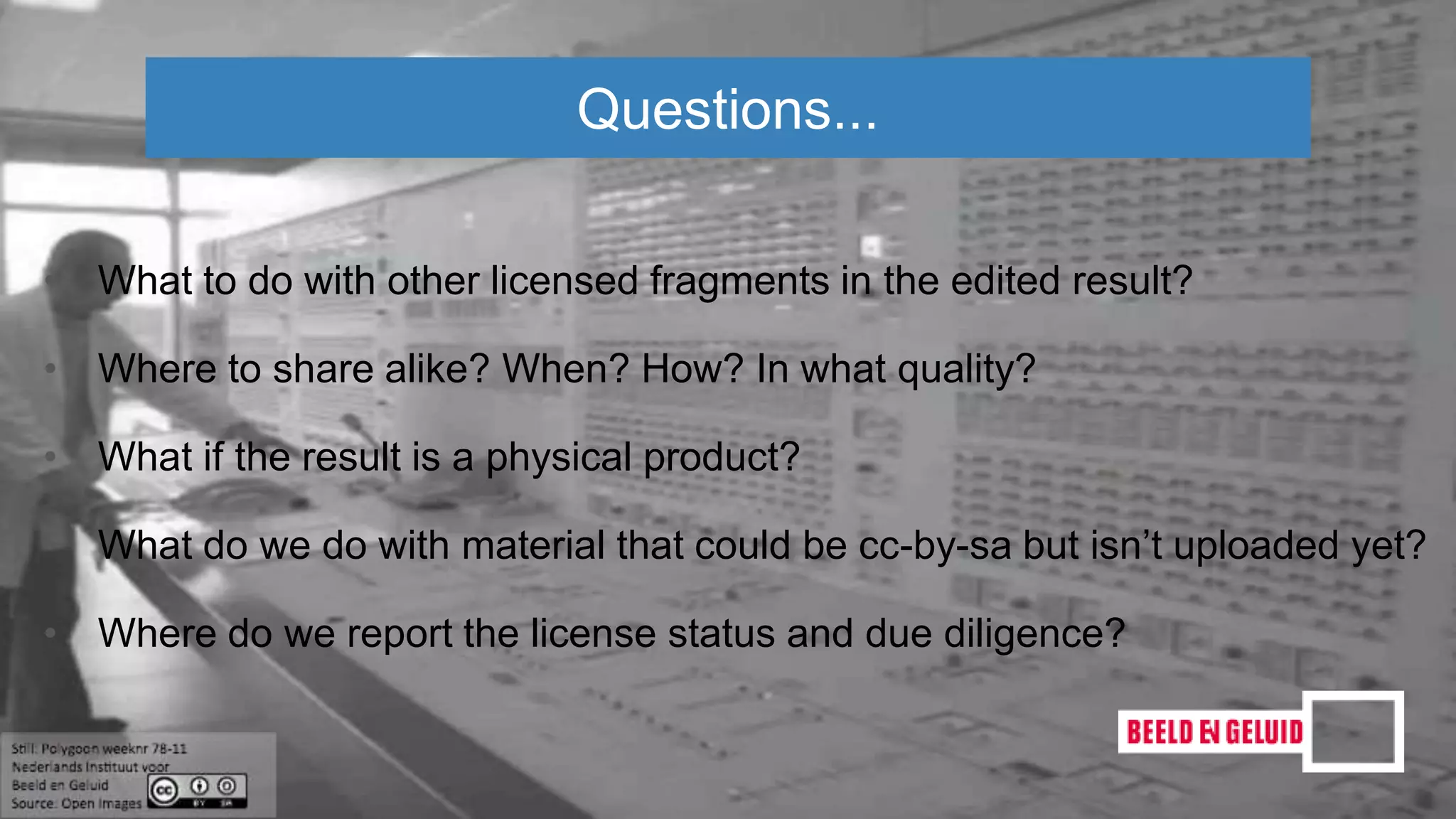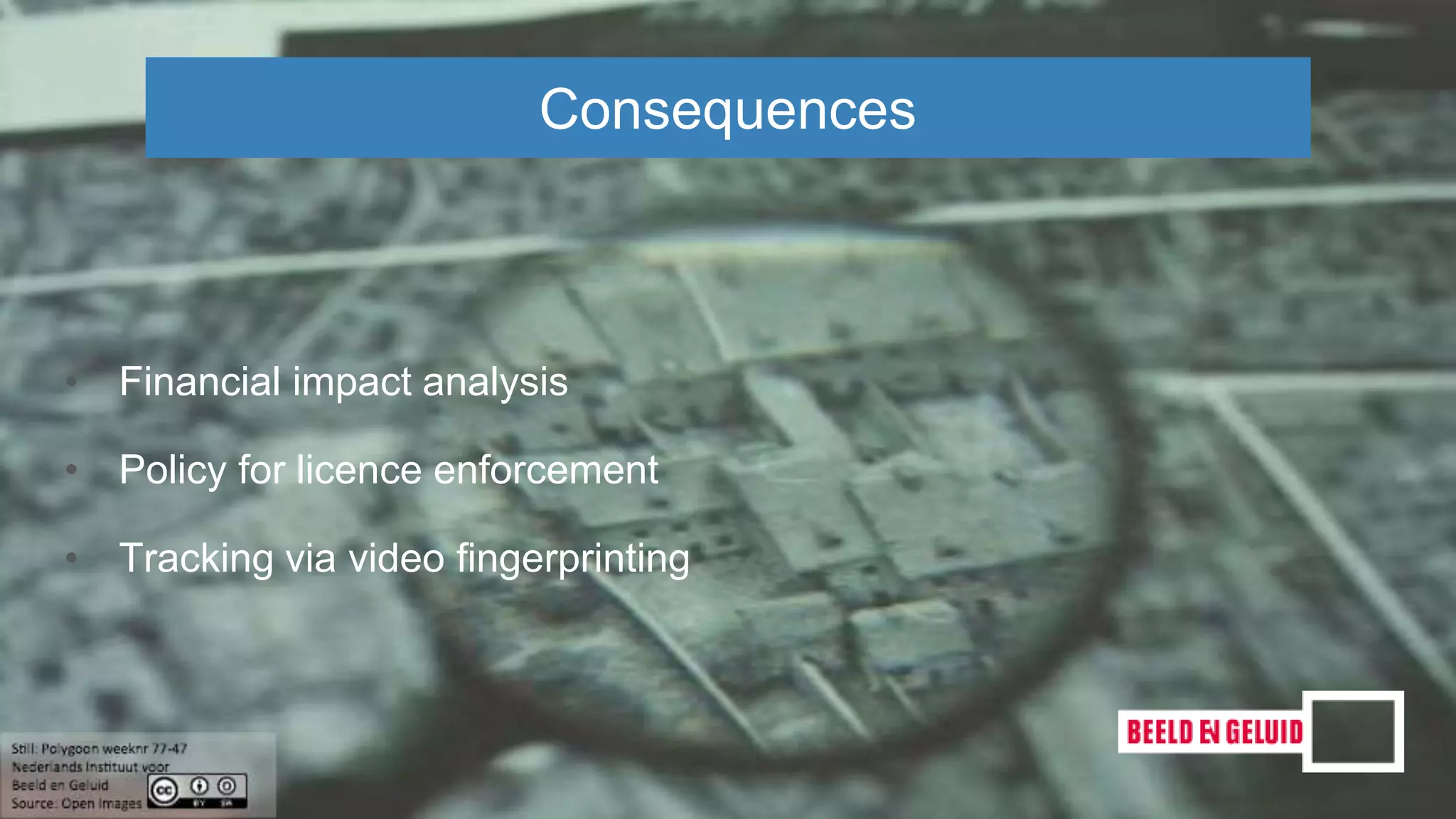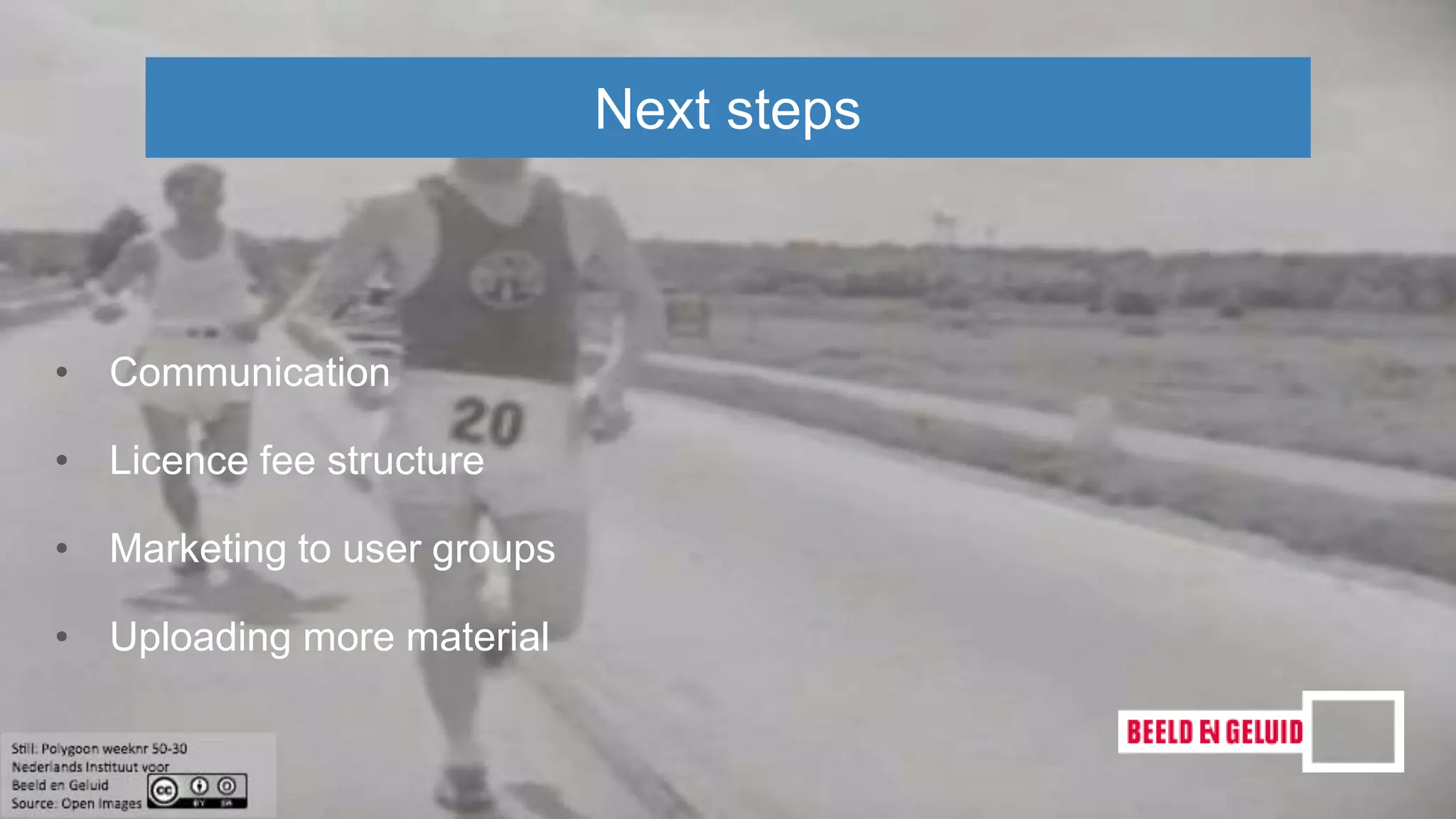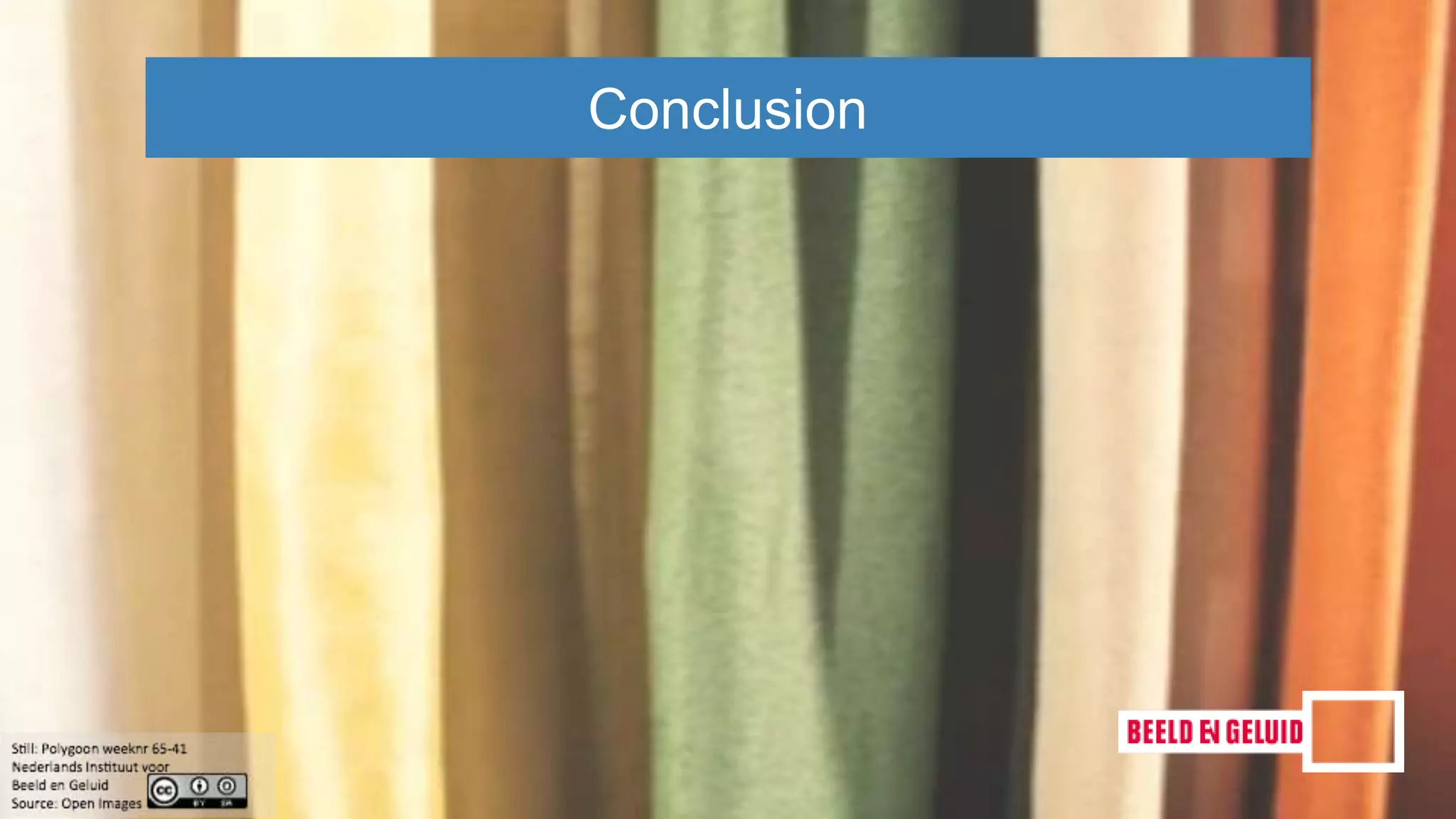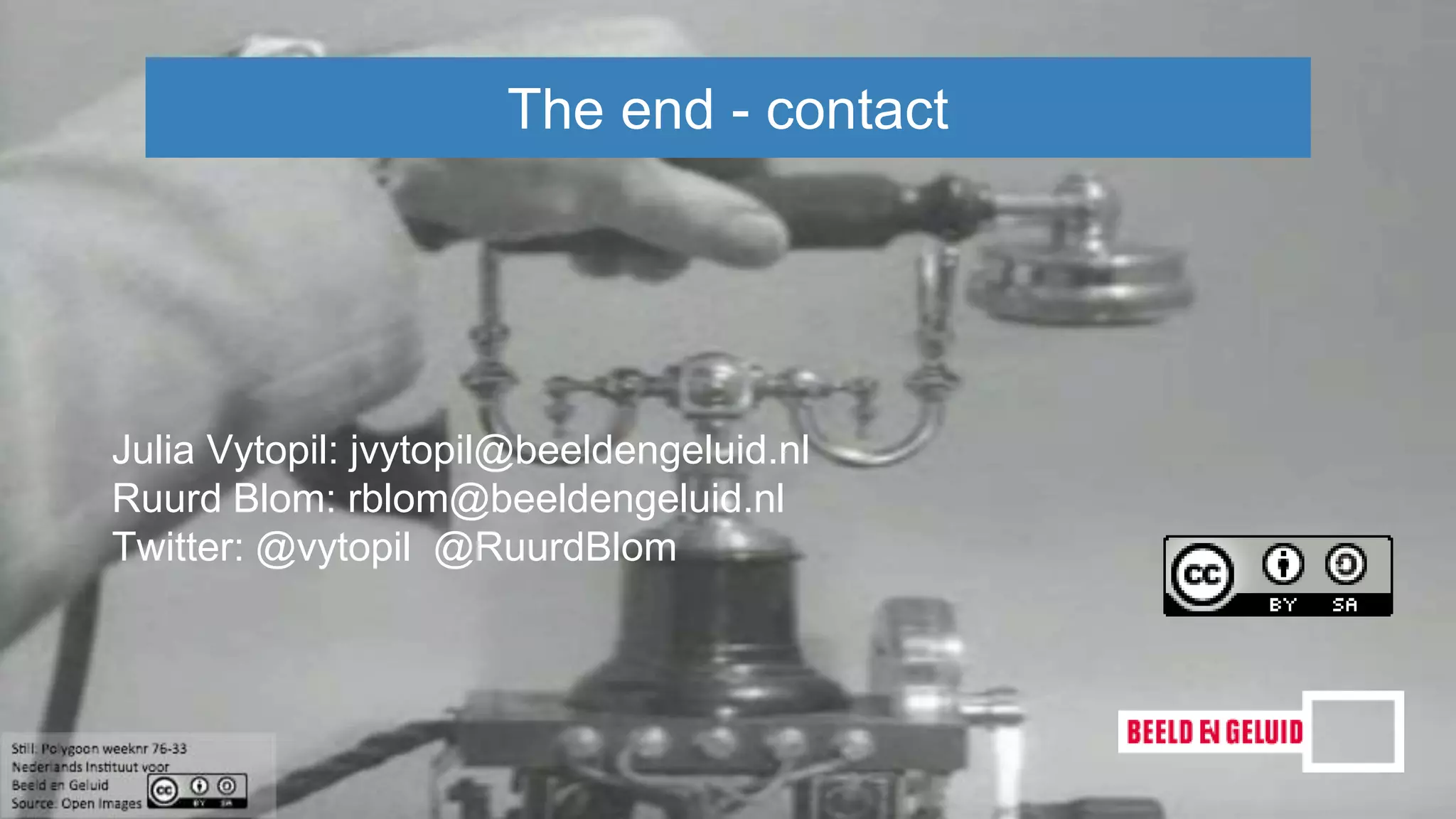The document summarizes a presentation by Julia Vytopil and Ruurd Blom about taking open accessibility of media collections to the next level. It discusses the Institute for Sound and Vision's move towards openly licensing more of its collection through Creative Commons to encourage reuse. This includes launching the Open Images platform to make archive material freely available to stimulate creative reuse by education, professionals, and the general public. It addresses challenges around interpreting the CC BY-SA license terms, managing rights, and questions from reusers about constraints and consequences of the open approach.
